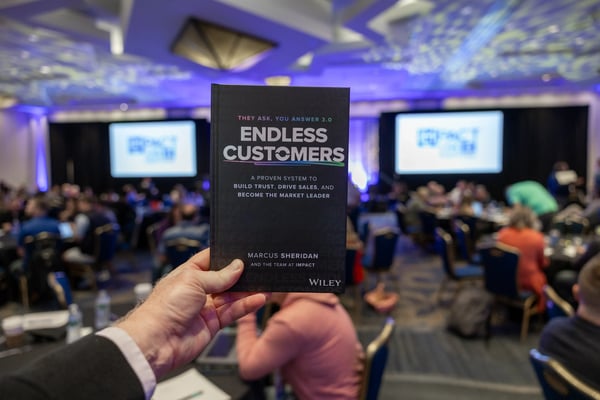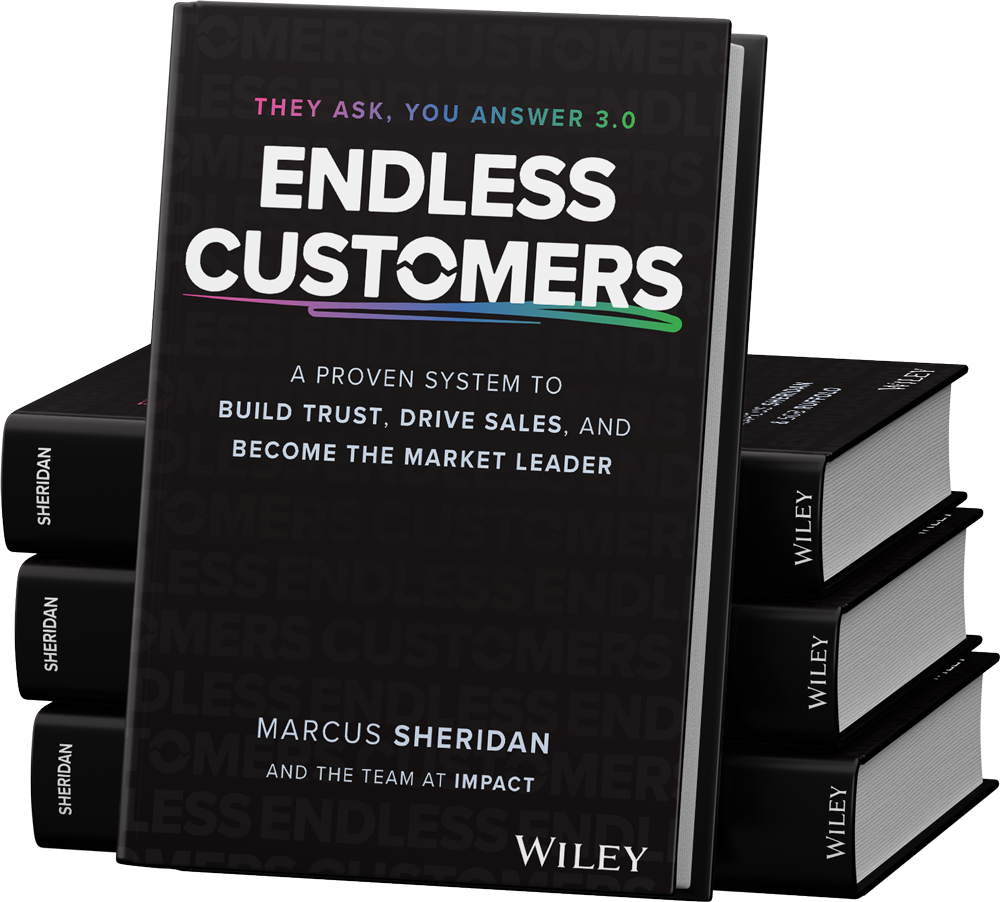Topics:
Endless CustomersSubscribe now and get the latest podcast releases delivered straight to your inbox.
How to Sustain Endless Customers for Long-Term Growth and Success

Sep 23, 2025

You're doing your homework and you see how Endless Customers could change the way your team earns trust and closes revenue. What you need now is confidence that the system will last inside your company after the kickoff.
At IMPACT, we’ve coached teams through this exact moment. The companies that sustain Endless Customers treat it like an operating system. They assign ownership. They build a cadence. They measure usage in sales. They train new hires into the system.
None of that happens by accident. It is planned and managed.
This article outlines the parts that keep the Endless Customers System™running and the safeguards we put in place so your team does not lose momentum.
What Sustains Endless Customers?
When leaders worry about sustainability, it often comes down to the same fear that’s common with any initiative: it will start strong and then fade. Endless Customers endures when the right structures and habits are built into daily operations.

Here are the elements that keep it alive long after the kickoff.
- A single owner with authority. Someone inside your company must own the system. This person sets priorities, protects the cadence, and keeps leadership, sales, and marketing aligned. We call this your Trust Champion. They make sure the right tasks happen on time.
- A shared content backlog created with input from sales. Sales hears buyer questions every day. That is your roadmap. Capture and prioritize those questions so your calendar is full of topics that move deals forward.
- A clear publishing cadence you can keep. Most teams start with a weekly article rhythm and a simple, consistent video plan. We recommend publishing three articles and two long-form videos each week, with the addition of two short-form videos. Always maintain a rolling backlog of six to nine pieces using a first-in, first-out approach. That way, vacations, sick days, or other disruptions never stall progress.
- Assignment Selling as a standard step. Content only matters in the sales process if buyers see it. Every rep needs to assign specific pieces before calls and proposals, with context that sets expectations. This is taught, practiced, and reinforced until it becomes normal behavior.
- A revenue team meeting that builds alignment. Marketing, sales, and your Trust Champion meet on a set schedule, at least once a month. These meetings are where the team shares recent wins, surfaces buyer questions, reviews how content is being used in sales conversations, and agrees on the next set of priorities.
- Onboarding that teaches the system. New hires learn how content is planned, how video is used, and how to assign resources to buyers. If onboarding omits Endless Customers, the system erodes each time the team changes.
What Makes Sustainability Hard?
Teams lose momentum when certain habits never take hold. The most common breakdowns are:
- Leadership’s attention drifts to the next big initiative.
- Sales stops using the content in live conversations.
- Content topics lose relevance because they no longer come from sales.
- New hires join and never learn how the system works.

Left unaddressed, these breakdowns add up until the strategy looks like it stalled. The good news is, each one has a straightforward fix if you catch it early.
How Does A Planning Session Reset Alignment?
Every 90 days, Endless Customers teams step back for a Planning Session. Leadership, sales, and marketing come together to reconnect to the long-term vision, review performance, and set the most important priorities for the next quarter. Each focus area has a clear owner and outcome, so accountability is never in doubt.

The Planning Session is the rhythm that prevents drift and keeps Endless Customers alive year after year.
How Does a Scorecard Keep You Honest?
During each Planning Session, your team grades itself on the ten prompts of the Endless Customers Scorecard. The prompts align with the five components of the system and make clear whether the work is showing up in daily behavior.


This keeps progress visible and ensures the system is being lived inside your company.
How Can We Keep Momentum Year After Year?
The real test comes after the first 90 days. What matters is whether the system becomes part of how you work after year one or fades into the background. The companies that sustain Endless Customers long-term share a few practices:
- Update older content. Reviews, pricing, and product details change. Revisit content every 6–12 months, or sooner if information becomes outdated.
- Reinforce Assignment Selling. Sales teams need ongoing coaching so content usage remains a daily behavior.
- Keep leadership engaged. Executives should continue asking for the Scorecard, joining revenue team meetings, and showing visible support.
These practices turn Endless Customers from an initiative into a culture. That culture is what lasts. The structures are clear, but sustaining them often takes outside guidance and accountability.
Ready to Build for the Long Term?
If you are worried about what happens after the kickoff, or if you have already tried to implement Endless Customers and struggled to keep momentum, the Endless Customers Coaching and Training Program is what we’ve found truly keeps organizations accountable.
It ensures that you set the structures, roles, and rhythms that prevent drift and make growth sustainable.
At IMPACT, we have guided hundreds of companies through getting back on track with their growth goals. With the right plan in place, you can move forward with confidence, knowing your investment will last.


Order Your Copy of Marcus Sheridan's New Book — Endless Customers!